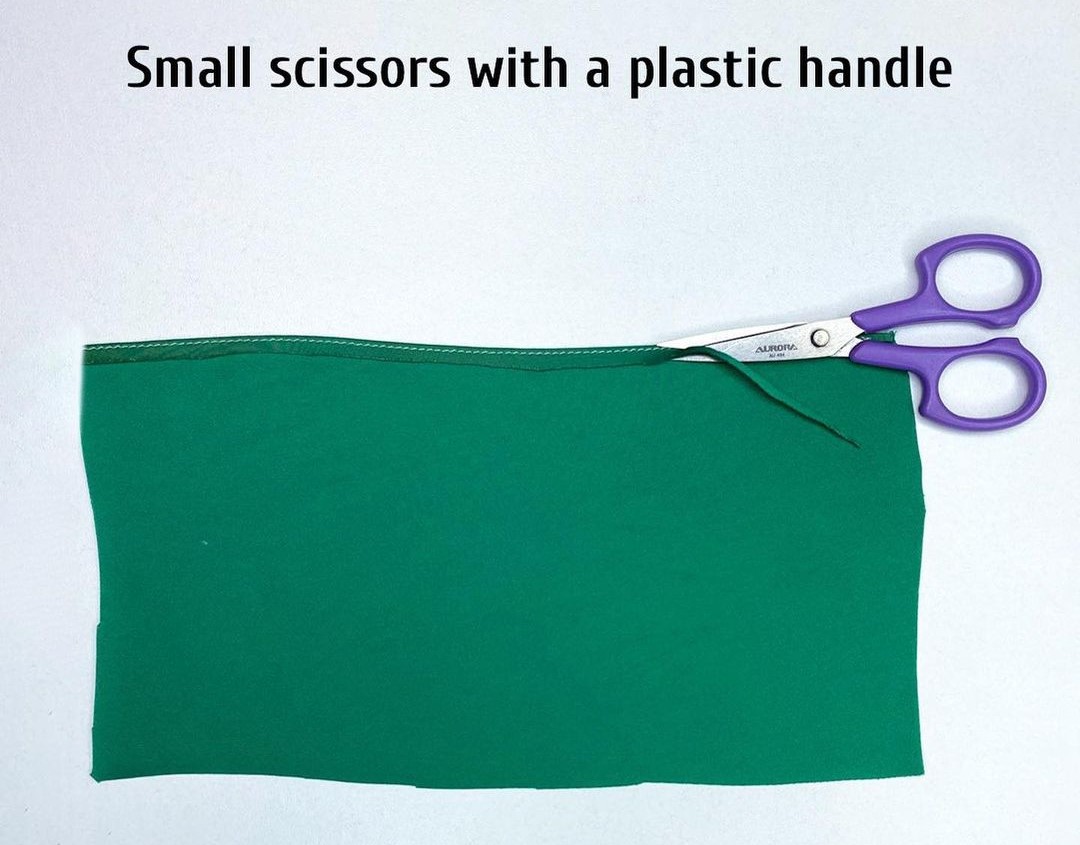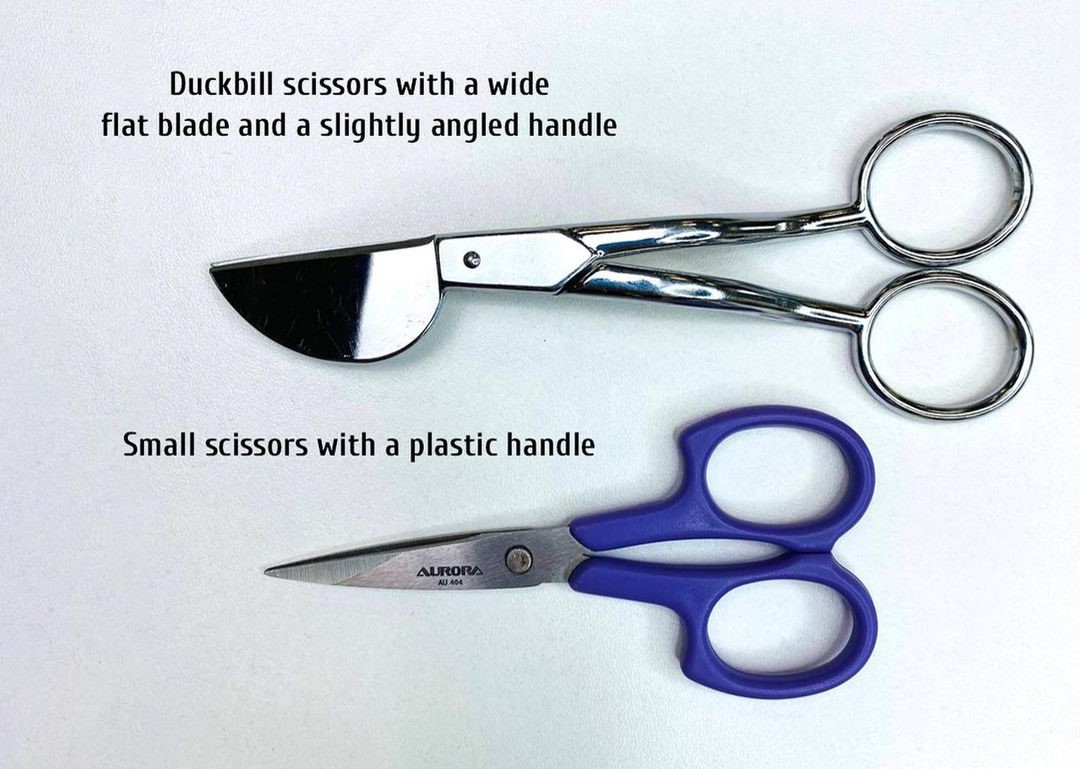For sewists, cutting scissors or shears are a precious tool that no other person is allowed to touch. They need to be taken care of, sharpened, protected from being dropped, watched after like a child.
Don’t forget that they are not intended to cut paper or chicken or to prune shrubs! Their only purpose is to cut fabric.
In sewing, you’re going to need various types of scissors. Let’s figure out their specific features in this post.

Scissors for lightweight and medium-weight fabrics.
We use Aurora scissors to cut silk, organza, cotton and other fabrics with similar qualities. Their total length is 23 cm (9”). Light and handy, these all-metal scissors don’t rub fingers and can be used both by right- and left-handed people. Strong and sharp blades make it easy to cut any fabric.

Scissors for medium- and heavyweight fabrics.
We use Bernina scissors to cut sweatshirt fleece, denim, coating fabrics, etc. Their total length is 23 cm (9”), with 9 cm (3 ½”) blade length. The adjustable screw makes it possible to tune up the scissors for various fabrics.
These scissors are asymmetrical: the lower blade lies straight along the surface, ensuring that the fabric doesn’t ride up and the blade doesn’t slip. The ergonomic handle can be gripped with all fingers at once, so the force is applied efficiently.

Saw-toothed pinking shears.
These are perfect to cut non-fraying materials, such as leather, faux leather or suede.



Trimming scissors for clipping, notching, trimming and grading.
If you sew with various types of fabrics, one pair of scissors is surely not enough. Any scissors you use should have ergonomic handles and sharp blades. Remember: they are for cutting fabrics only! And make sure your family members are aware of it, too!
Read more about useful notions and equipment for sewing:










Здесь пока нет комментариев